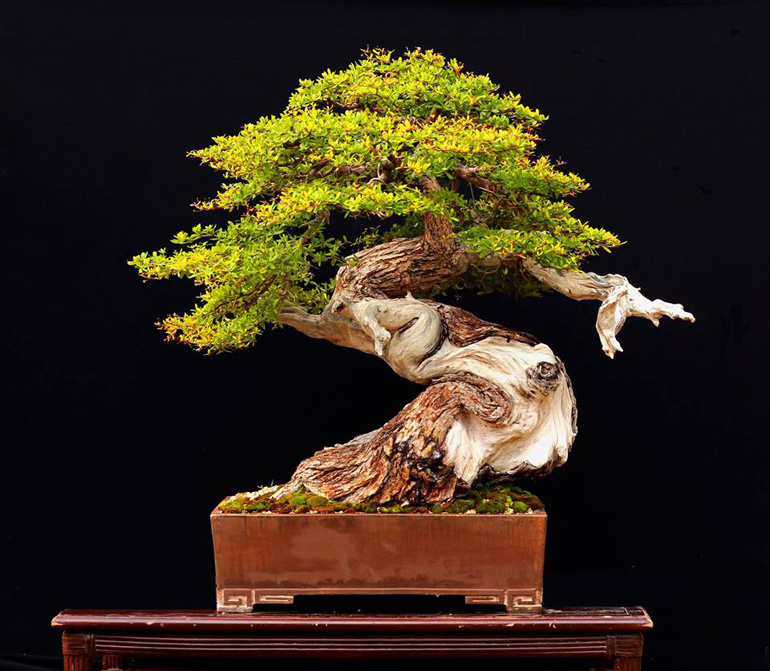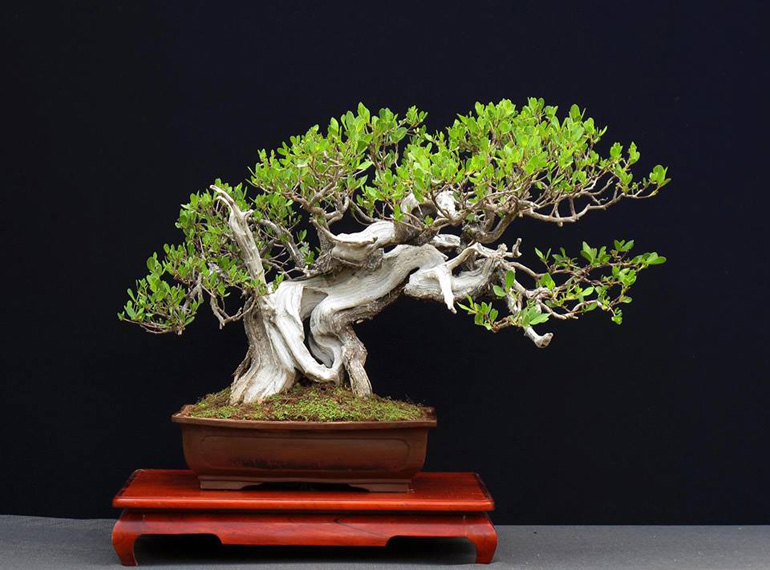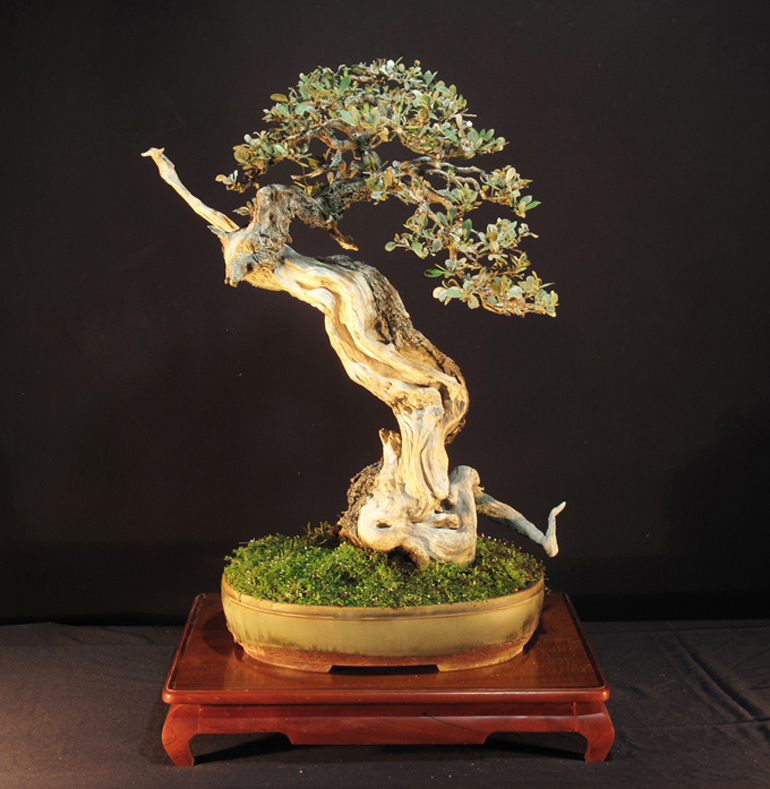
The serpent is hiding in plain sight. This magnificent tree (with or without the serpent, though I prefer with) belongs to Enrique Castaño, who has this to say about it: "This Terminalia (ucarillo) got the name Kukulcan from the Mayan mythology, Kukulcan was one of the serpents with feathers, kind of like a dragon. Soon I will show Quetzalcotl another more impresive Terminalia."
The more I look at the tree above, the more I notice how well the elements all tie together. The way the color of the pot mirrors the bark and the reddish tips of the leaves. The way the bark undulates and flows from the base up into the serpentine deadwood which picks up the movement and carries it up the tree where the bark picks it up again as it flows into the foliage which sits so relaxed and well balanced. And then there’s the sheer power of the trunk… (we’ll blame it on too much coffee this morning).
All three of the trees shown here belong to Enrique Castaño (facebook say Castano but his book say Castaño – see below). According to facebook, Enrique is originally from Mexico and now lives in Bali, Indonesia (Okay. Turns our he’s still in Mexico. Never trust anything on the web. Facebook or Bonsai Bark). Enrique is the author of Botany for Bonsai (see below).

Like the tree above, the deadwood in this Buttonwood has a lot going on.

Another Buttonwood. This one is the cover tree for Botany for Bonsai.

Enrique's Botany for Bonsai. Currently 25% off our already discounted price, as are all of our books.
Wayne
Plant Names – Aargh! I know it’s an old story, just thought I would share my little challenge of the day.
Your recent post of Enrique Castano’s amazing bonsai with the name “Terminalia (ucarillo)” threw me for a loop. I looked up Terminalia and as I thought, it is a fairly large leaf tree. (There may be a small leaf variety, I didn’t pursue it.)
I couldn’t find anything for ucarillo, so on a guess I went to the Spanish/English dictionary … nothing. Also checked botanical sites … nothing. However, when I googled Ucarillo Bucida it came up on several Spanish speaking bonsai sites.
My guess all along was Bucida spinosa, (aka dwarf black olive) and so it is … and what a lovely yamadori Bucida it is!
Thanks Mary,
Good detective work and I suspect you are on to something. Maybe Enrique can chime in and set the record straight.